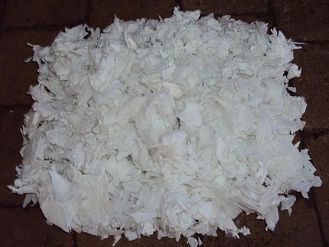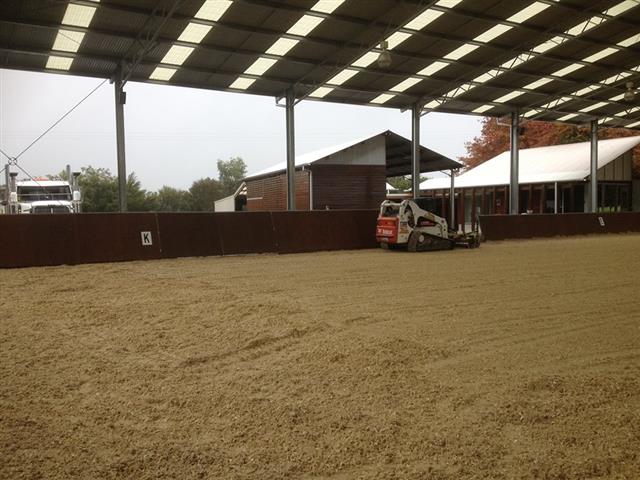FAQ

What is Geopat?
Geopat ® is made of polyester fiber, consisting of flakes of membranes. It is best described as a synthetic material that consists of fibers and wires that cross each other, being binded with a material at the intersection of the fibers. In short, it consists of composed laminated products that are wrapped in a membrane.
Geopat ® and especially the geo-membranes are very tough materials and can not be biologically decomposed. They are fabricated from synthetic materials such as polyester fiber, polyamide fiber and acryl fiber). Geopat ® flakes are shredded into sizes between 0.5 and 40 mm.
Why choose Geopat for your arena?
Geopat is acknowledged by experts throughout the world to be the ideal surface foundation. There is only one real Geopat and Pro Equestrian Surfaces are proud to be the sole Import distributors. Be wary of imitations of inferior quality.
Benefits of installing Geopat:
Arena surfaces can often encounter all sorts of problems. Either the footing becomes too deep for the horses, which can cause tendon injuries. Or they become too hard, which lead to premature joint damage. There can also be issues with the surface becoming too dusty or slippery, posing both a danger and health hazard.
The Geopat technology solves all these problems by stabilizing the sand to produce both a consistent and shock absorbing surface that both you and your horse will love for many years to come. Enjoy the luxury!
What happens after I have placed my order?
Once an order is placed, your Geopat shipment arrives from Belgium to your arena site in large white squares bales weighing on average 220 kilos each.
Geopat is installed ideally at a ratio of 4 kilos per square metre. While we can supply a lesser quantity if your budget requires, the ideal final stage for your surface works out at this rate for a sand base of approx 3”. A typical 60 X 20 arena would require 1200 square metres of Geopat spread evenly over the sand base (4800 kilos of Geopat in total)
Once the Geopat has been spread out as per our instructions, a power harrow is then required to work the Geopat into the sand 1cm at a time until a 5cm Geopat/sand mix has been created. The surface is then given a good watering and is ready to use. What makes this surface so unique is that it just gets better over time, as the Geopat gets worked more and more into the sand base.
What type of sand is best suited with the Geopat?
Type of Sand
The best sand to use is silica sand. Silica sand is very hard and will not degrade easily. Check with your quarry to see what is available to you.
Particle Size
You will want the particles be fine to very fine -with at least five seive sizes ranging between an (ASTM) #60 sieve (.250 mm) and an #200 sieve (.075 mm). Ask your gravel pit or quarry to give you a sieve analysis, which should always be available for the types of sands they sell. This will help you to determine the specific particle size of each type of sand.
Particle Shape
The third part of this equation is the shape of the sand particle which works best if it is a sub-angular shape. However, because silica sands are formed from erosion, most silica sand will be a round to sub-angular sand particle. It is ok to use a very fine round particle but you may want to have a small amount of sub-angular particles added to the sand to help with stability. The sand should also be well graded: meaning that all the sand particles should not be the same size. Most gravel pits will mix different sands for you so that you can get a variety of grades, shapes, and sizes.
How long after an order is placed can I expect delivery?
When we have your required amount of Geopat in stock, delivery can be organized within 1-2 weeks. Shipments from Belgium normally take around 6-8 weeks by the time the container clears customs.
Can the Geopat be used for both Indoor as well as Outdoor arenas?
Yes! Geopat is standing the test of time with many hundreds of arenas now successfully installed throughout the world with variable climate challenges. Many outdoor as well as indoor arenas in Europe are still riding superbly after more than a decade of heavy use. The only difference for an outdoor arena as opposed to an indoor will be in the choice in sand.

